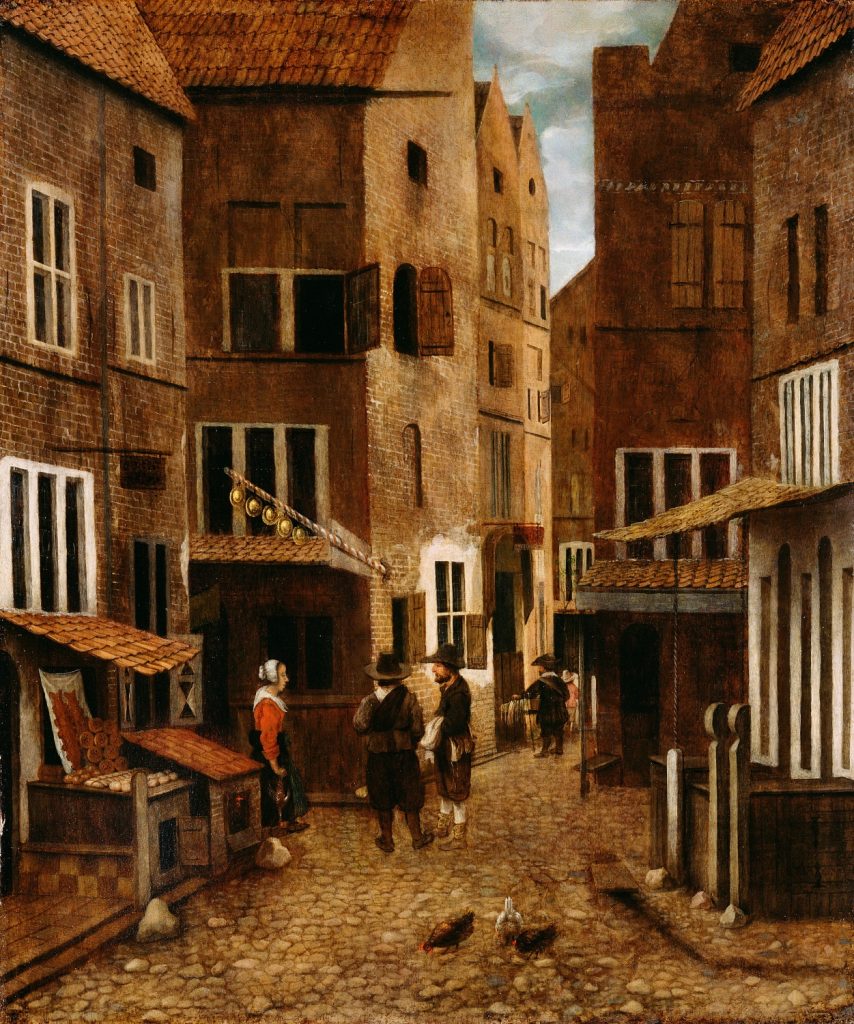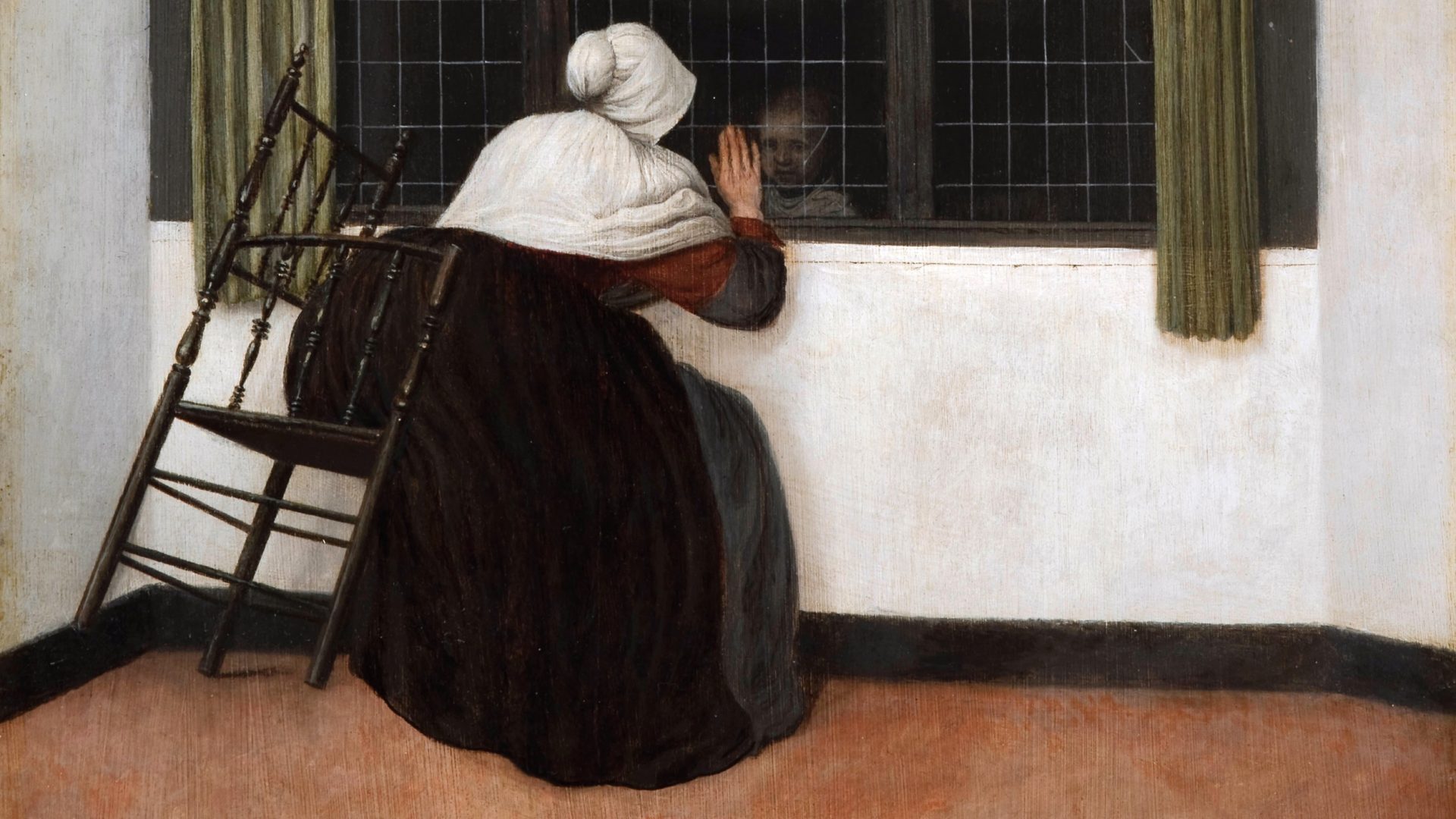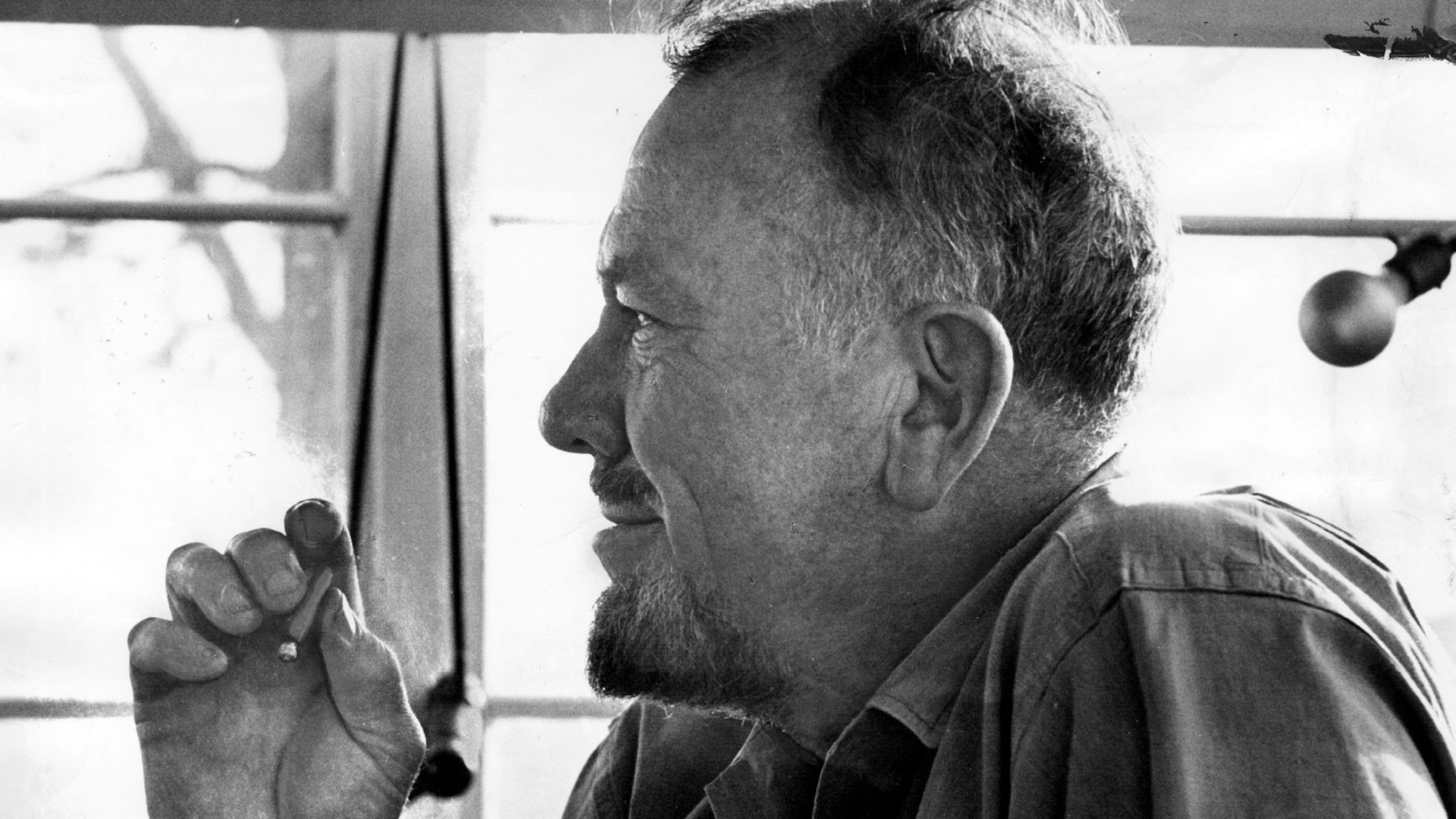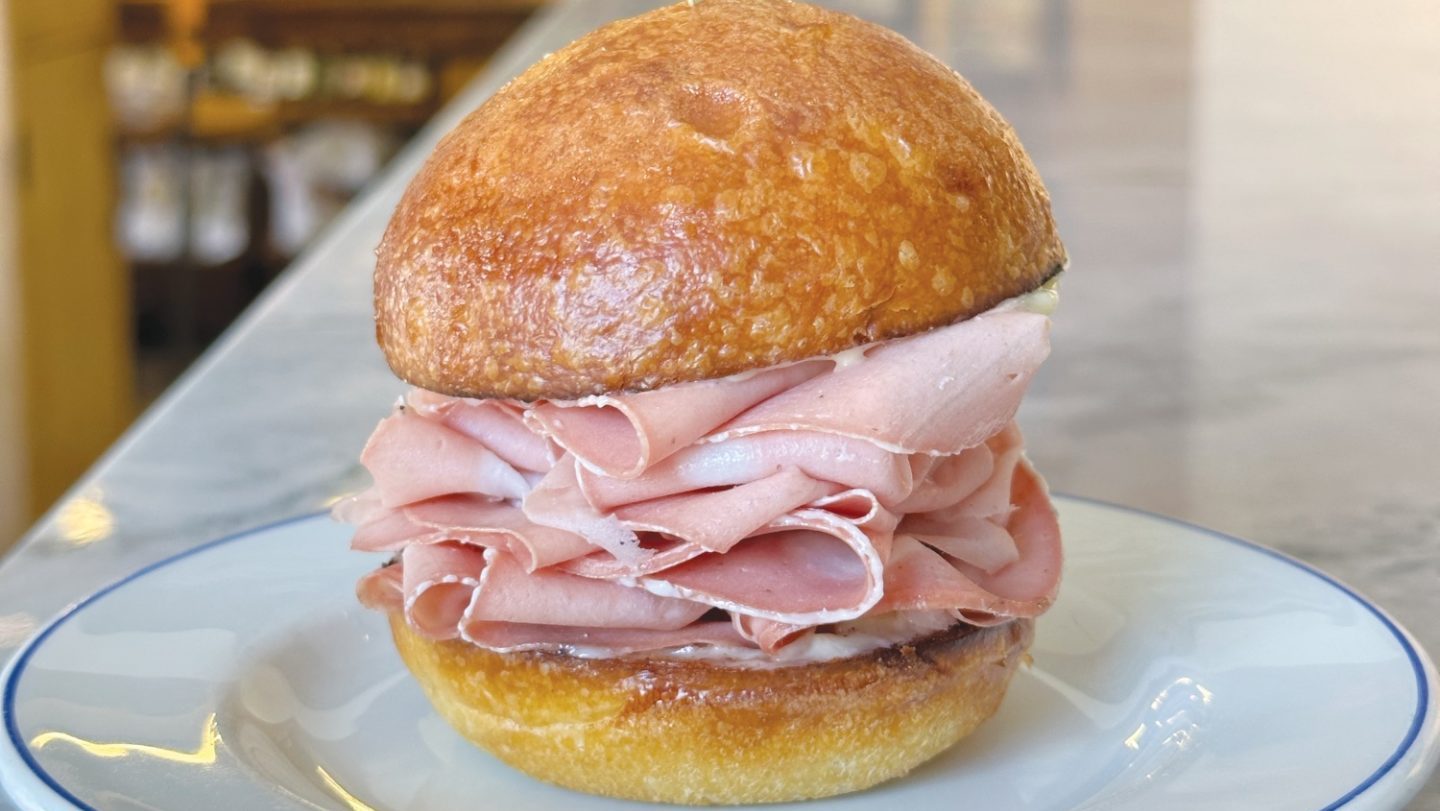Johannes Vermeer has never been hotter. More than 200,000 people bought tickets to the Amsterdam “family reunion” exhibition which collects together 28 of his greatest works, and they will continue to walk in wonder through the Rijksmuseum until June. But the real intrigue lies an hour away, in The Hague.
At the Mauritshuis, Vrel, Vorgänger von Vermeer (Vrel, Forerunner of Vermeer) is a chance to see 13 paintings by one of the finest Dutch artists of the 17th century. Jacobus Vrel (active from the 1630s-60s) produced exquisite paintings of street scenes and domestic interiors before Vermeer, many of whose greatest works were created in the decade before his death in 1675.
For many years, 25 of Vrel’s 49 known paintings were lauded by art critics, dealers, and collectors as the work of Vermeer. Then, in the late 19th century, a keen-eyed art dealer spotted differences in signatures. He researched further and discovered that Vrel was the originator. Delving further, it was found that paintings by Vrel had been credited to major Dutch painters to be sold for greater amounts.
The Mauritshuis exhibition seeks to reset Vrel’s place within the golden age of Dutch art. It is a collaboration of years of joint research by the Bayerische Staatsgemäldesammlungen in Munich, the Fondation Custodia, Frits Lugt Collection in Paris and the Mauritshuis, and the painstaking work pays off spectacularly.
Jacobus Vrel is an enigma. His identity is a mystery. There are no letters, no will, no records of baptism, marriage or death or guild memberships, to discover who he was. His epitaph is written in less than 50 paintings and one drawing of a street scene, authenticated to be his work. Without specific records, the researchers have focused on signed paintings, and one official document listing three artworks in the collection of Archduke Leopold Wilhelm of Habsburg (1614–1662).
From 1647 to 1656 the Archduke, stadtholder of Brussels, governed the region known as the Southern Netherlands. A voracious collector of art, he acquired many works during his stay, obtained under the guidance of the keeper of his gallery, David Teniers the Younger (1610-90). The collection was sent to Vienna when the Archduke left Brussels. Vrel’s paintings were listed in a 1659 inventory of this collection that became the foundation of the Picture Gallery at the Kunsthistorisches Museum, Vienna.
Vrel’s inclusion in the catalogue of over 1,400 works, which contained Italian and northern European paintings by notable artists, gives an indication that he was collectable and recognised. Nevertheless, the charming Landscape with Two Men and a Woman Conversing (Kunsthistorisches Museum, Vienna) created before 1656, and listed as one of the three paintings in the Vienna collection, was attributed for years to the German artist Johannes Lingelbach (1622-74), a painter from Frankfurt who died in Amsterdam.
It was not until 2016 that Vrel was acknowledged as the originator. It had been listed as an original work by “Jakob Fröll” in the 1659 record. It is his only known landscape. The painting was cleaned for this presentation and the removal of a thick layer of deeply-yellowed varnish revealed the bright blue sky, and foreground colours. It is a stunning painting.
The setting of people meeting one another is a regular feature of Vrel’s street scenes, on this occasion transferred to the countryside. The two other paintings listed in the 1659 inventory were Woman Leaning out of an Open Window, 1654 (Kunsthistorisches Museum, Vienna) and Interior with a Woman Sleeping by the Fireplace, before 1656 (The Leiden Collection, New York).
Researchers have used dendrochronological analysis to study the tree rings in the wood panel paintings. Their findings suggest the works to be older than first thought: around 1635-40 for street scenes and 1650s for interiors. They have looked more closely at the clothing worn by Vrel’s subjects, and the architecture of the street buildings, to attempt to identify dates and locations. And while Jacobus Vrel continues to elude the most specialist researchers of Dutch art, his paintings are accepted as the work of one of the finest Dutch painters of the 17th century.
And yet, he disappeared from view in the late 1600s, and is not mentioned by art biographers, or recorded in art auctions or catalogues for nearly two centuries. His works were attributed to other painters including Vermeer, Pieter de Hooch (1629-84), Isaac Koedijck (1617–c.1668), and Lingelbach. It was only after an art dealer handling Dutch paintings looked more closely at the signatures – Vrel had quite a few variations including J.V., Jacobüs Vreel, Jakob, J., Frëll , Frel and Fröll – to discover that Vrel was a forerunner to Vermeer. This is significant because Vrel, like Vermeer and de Hooch after him, created remarkable works of domestic interiors and street scenes.
But where did Vrel work? Two oil-on-panel paintings, Street Scene with a Bakery by the Town Wall, presumably the Waterstraat in Zwolle, after 1646 (Private Collection) and Street Scene with a Woman Seated on a Bench, after 1650 (Rijksmuseum) are in the exhibition. The reference to Zwolle, a city located in north-east Netherlands is determined from the town wall and the buildings’ architectural features.
It would place Vrel in that location, particularly as two further versions with alterations to architectural detail were painted later by Vrel around 1653. Of equal interest is his use of a portrait, not landscape format, which brings the buildings closer together, creating a community atmosphere with people on the narrow streets.

All were created prior to Vermeer’s View of Houses in Delft (The Little Street), 1658-59 (Rijksmuseum), and Pieter de Hooch’s many paintings with a street location. This is not to say that other artists copied Vrel. The content of works of this period are saturated with public and domestic interiors – Jan Steen (1626-79) was a master of this genre – as cityscapes, topographic views and street scenes were popular and sold on stalls in marketplaces, and by art dealers in galleries and varied locations including bakeries and inns. Residents, from small cottages to large mansions, had artworks on their walls.
Domestic interiors painted by Vrel have immense empathy with Dutch life. The paint-palette is near monochromatic in its use of browns, greys, white, off-white, black and yellow. He captures both the private and public lives of ordinary people in simple settings.
Woman Leaning out of the Window, 1654 (Kunsthistorisches Museum, Vienna) depicts a plain room softly lit with natural light. A matronly woman leans out of a window as sunlight and air filter into the room. The woman’s cap and shawl is bright white, drawing attention to her and what she is doing. She is perhaps talking to an unseen person, bringing together the inside and outside environment.
Vrel places the viewer in the room to witness a typical moment in her day. On the right is a fireplace and a low wooden chair, and at the centre a table with sewing placed on it. A perforated box, the footwarmer is between the table and chair. Has she put down her work to chat to someone? Vrel draws the viewer in.
On the left, there is a cupboard with a hat and coat hanging up. And here below the coat is a signature and date: “J. Frel 1654”. This is the only known painting to be dated by Vrel. His signed-only paintings included a trademark trompe-l’oeil piece of paper recording his name. A scrap of white paper signed “J Vrel” is on the wooden floor in one of the most exquisite works, A Seated Woman Looking at a Child through a Window, after 1656 (Fondation Custodia, Paris).
The mature woman appears again, tending the fire in Woman at the Hearth, 1654-62 (Rijksmuseum, Amsterdam). The fireplace, chair and footwarmer appear, which places the artist in the same location. Was this his home, or lodgings? The woman bends to stoke the fire under a copper pot in the fireplace. Vrel has used warmer colours, a hint of red for her sleeve and warmer-yellow tiles on the mantelpiece.
Its ledge has Dutch plates. There is a fire-screen by the chair. These are subtle cinematic scene-setters, so simple yet atmospheric and compelling. The faces are unseen, possibly to market the works as typical but anonymous domestic settings. Some do show facial features, as in Interior with a Woman Combing a Girl’s Hair, and a Boy at a Dutch door, after 1649 (Detroit Institute of Arts, Michigan); and An Old Woman Reading, with a Boy behind the Window, after 1655 (The Orsay Collection).
A major starting point for researchers is to attempt to find where Jacobus Vrel was born. The various signatures he used included umlauts, indicating possible German origins, but this was in an era when names were often changed depending on where people lived. Vrel may have travelled between countries to work. Albrecht Dürer’s father altered his Hungarian surname when living in Nuremberg.
Since Vrel’s rediscovery in the 19th century, scholars have attempted to unearth his origins. Without archival documentation, theories have surfaced to suggest his birthplace to have been from as far as the Baltic Sea to the United Northern Provinces and the Southern Netherlands, or possibly Westphalia in Germany. No evidence has materialised after years of research. He remains an enigma. The paintings alone mark Vrel’s place in history.
Vrel, Forerunner of Vermeer is at the Mauritshuis, The Hague until May 29 and then at Fondation Custodia, Paris from June 17 – September 17



